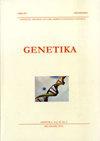The effects of irrigation water salinity on the seed germination and seedling growth of rice
4区 农林科学
Q3 Agricultural and Biological Sciences
引用次数: 0
Abstract
To determine the effects of irrigation water salinity on seed germination and seedling development of two rice cultivars, irrigation waters with low SAR (below 3) were prepared in different salinity levels (control [0.5], 2, 4, 8, 12, 16, and 20 dS m-1) from different salinity sources (NaCl, MgS04, and CaCl2 salts). The average germination rate was decreased for the cv. Baldo 20.19%, while for cv. Osmanc?k - 97 it was 26.73%. The average of the single seedling dry weight of cv. Baldo was 0.2666 g, while for cv. Osmanc?k-97 it was 0.2569 g. The average single seedling dry weight was 0.2940 g in the control application. In parallel to the increased irrigation water salinity level, the single seedling dry weight decreased. The irrigation water salinity had not affected up to 4 dS m- 1 in terms of the germination rate decrease and the single seedling dry weight of rice, but it started to be affected when increased salinity level to 8 dS m-1 and it was more effective at higher doses. Also, cv. Osmanc?k-97 was more sensitive to irrigation water salinity than cv. Baldo. In conclusion, it turns out that the irrigation water to be used in rice farming should not have salinity since the tolerance of the rice plant against irrigation water salinity is low.灌溉水盐度对水稻种子萌发和幼苗生长的影响
为研究灌溉水盐度对2个水稻品种种子萌发和幼苗发育的影响,采用不同盐度源(NaCl、MgS04和CaCl2盐)配制不同盐度水平(对照[0.5]、2、4、8、12、16和20 dS m-1)的低SAR灌溉水(低于3)。平均发芽率降低。Baldo为20.19%,而cv为20.19%。Osmanc吗?K - 97为26.73%。单株干重的平均值。Baldo为0.2666 g;Osmanc吗?K-97为0.2569 g。对照处理单株平均干重为0.2940 g。随着灌溉水含盐量的增加,单株干重呈下降趋势。灌溉水含盐量在4 dS m-1以下对水稻发芽率和单株干重没有影响,但在8 dS m-1以下开始有影响,且含盐量越高效果越好。另外,简历。Osmanc吗?K-97对灌溉水盐度的敏感性高于cv。鲍多。综上所述,由于水稻对灌溉水盐度的耐受性较低,因此用于水稻种植的灌溉水不应含盐。
本文章由计算机程序翻译,如有差异,请以英文原文为准。
求助全文
约1分钟内获得全文
求助全文
来源期刊

Genetika-Belgrade
AGRONOMY-GENETICS & HEREDITY
CiteScore
1.80
自引率
0.00%
发文量
1
审稿时长
6-12 weeks
期刊介绍:
The GENETIKA is dedicated to genetic studies of all organisms including genetics of microorganisms, plant genetics, animal genetics, human genetics, molecular genetics, genomics, functional genomics, plant and animal breeding, population and evolutionary genetics, mutagenesis and genotoxicology and biotechnology.
 求助内容:
求助内容: 应助结果提醒方式:
应助结果提醒方式:


